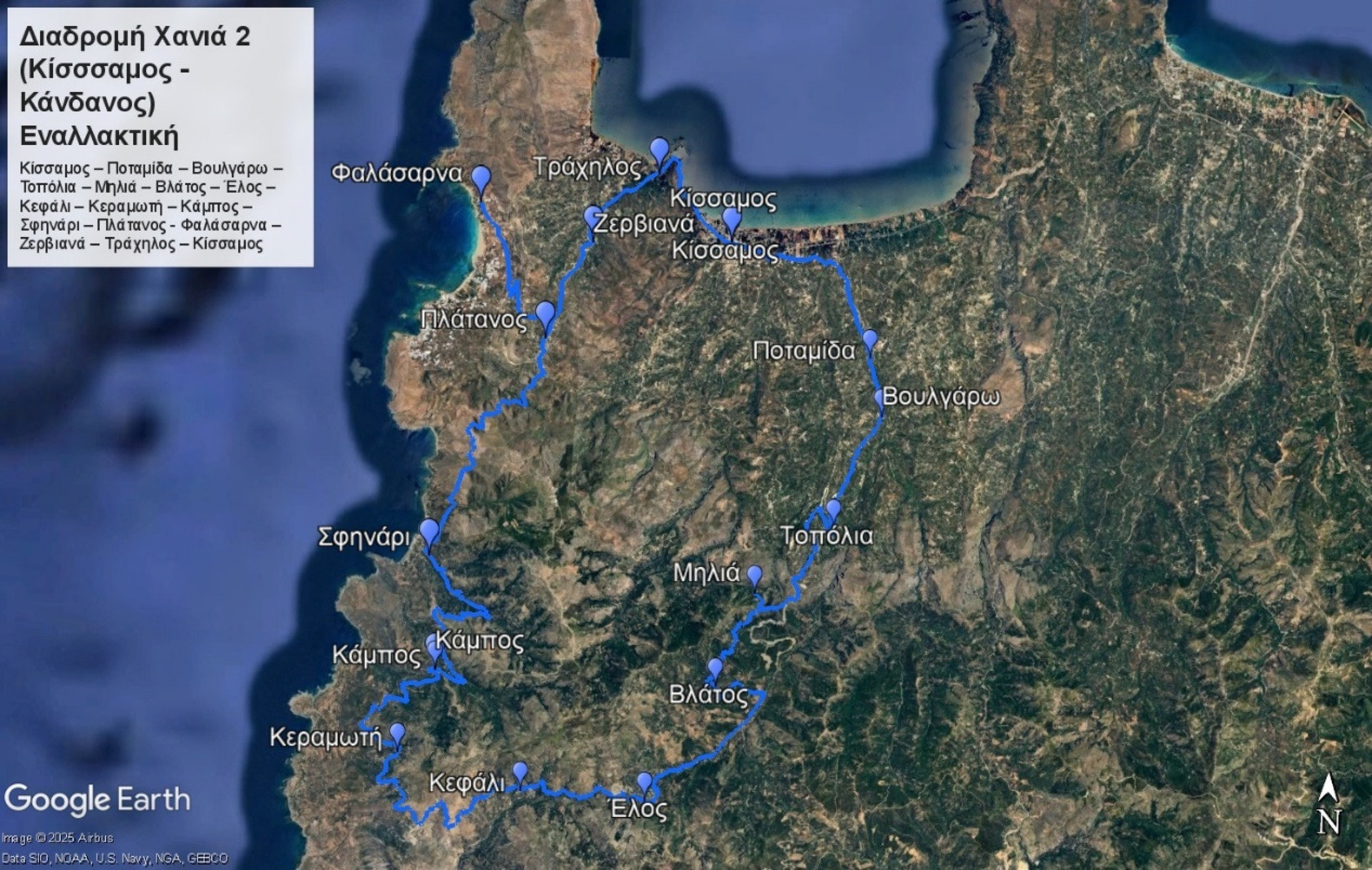Chestnuts Call for Wine

The route has a total length of 85 kilometers and lasts about 2.5 hours by car or motorcycle without stops. It is easy, accessible year-round, and ideal for visitors interested in nature, the environment, the sea, hiking, cycling, and local gastronomy.
In this 2.5-hour journey, Kissamos unfolds landscapes that enchant and captivate. From the stone formations of Potamida and the Topolia Gorge to the forest of Vlatos and the eco-settlement of Milia, nature reveals its rare beauty. In Elos, Vlatos, and the other nine villages, chestnut trees spread tranquility, while in Sfinari the scent of the sea emerges. The route culminates in Falassarna, with its ancient city and beach of dazzling sand and endless blue. The circle closes in Kissamos with the emblematic Kavonisi, the westernmost port of Crete, carrying memories of Tseka and his little boat.
The heart of the experience, however, beats in gastronomy. Kalitsounia, in every variation—with greens, with myzithra, or sweet with honey—are small miracles of taste, lovingly handmade. The Chania boureki, with zucchini, potatoes, and myzithra, embodies the richness of local cuisine. Chestnuts cooked in every way bring autumn aromas to the table, while goat with stamnagathi lends hidden strength to every dish. Eggs with staka are a flavor for any time of day. Snails with broad beans and artichokes, as well as plakovrasto of Kissamos—a layered fish soup—complete the region’s culinary identity.
On tables and in shop counters, local products reign supreme: pichtogalo, graviera, xinomizithra, premium olive oil, honey from Afrata, chestnuts from the nine villages, wild herbs, and local cured meats. All pair beautifully with Kissamos wine, fine tsikoudia, and the sounds of Cretan syrta.
Along this route, the land is authentic and unspoiled—landscapes that mesmerize and flavors that remain unforgettable. Every stop is a surprise, every dish a story, every glass of tsikoudia a step closer to the sacred secrets of taste and the Cretan Dietary Culture. If time allows, daily boats depart from Kissamos for excursions to Balos and Gramvousa, while the region offers many excellent tavernas, hotels, guesthouses, and agritourism lodgings.
Route Products
PDO products: Pichtogalo of Chania, Graviera of Crete, Xinomizithra of Crete, Pine-thyme honey of Crete.
PGI products: Chania wine, Kissamos wine.
Special products: Chania chestnuts, Afrata honey, stamnagathi of Gramvousa, olives, olive oil, wine, tsikoudia, cheeses, cured meats, fish, and seafood.
Route Delicacies
Plakovrasto of Kissamos: A local version of kakavia (fisherman’s soup). Made with layers of onion, tomato, fish, and potato, it produces a thick broth and a dish both simple and full of flavor.
Meat with stamnagathi: A traditional dish with pure local ingredients and rich taste. Made with goat or lamb, olive oil, wine, and stamnagathi—a wild green famous for its quality and mild bitterness. The dish pairs beautifully with Kissamos wine and good company.
Boureki: An emblematic dish of western Crete. A rich pie with four layers—three of zucchini and one of potato. The vegetables are lightly fried beforehand, while the pan is lined with phyllo pastry at the bottom and top. Chania myzithra is the key ingredient, adding unique flavor, while tomato is essential to bind and aromatize the dish.
Kalitsounia: A Chania specialty, though every area has its own savory versions—with greens or the region’s renowned cheeses, including Chania myzithra but especially tyromalama, a soft sheep-and-goat cheese produced in the early stages of graviera-making, usually in spring.
